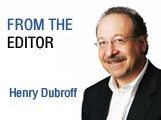Area banker tells Fed chair how grim it is
 You might say it was an invitation he couldn’t refuse.
You might say it was an invitation he couldn’t refuse.
Just a few days before Federal Reserve Chairman Ben Bernanke’s Oct. 4 testimony before Congress, Santa Barbara resident and California Bankers Association President Rod Brown was ushered into the Fed’s stately board room in Washington, D.C.
Joined by 30 executives from California and Florida, he and his colleagues had been summoned by the Fed chairman to give an up-close look at lending conditions in two states that have been badly battered by the Great Recession.
During a phone chat that took place a few hours after Bernanke finished his testimony, Brown described a 65-minute meeting in which five members of the Fed board of governors listened intently as community bankers described a series of challenges facing their industry. “There was an appetite and willingness to listen,” he told me. Topics included the extremely slow recovery in two key states, lack of loan demand and the consequences, both intended and unintended, of the Dodd-Frank bank reform act.
Brown said he and his colleagues described an “enormously challenging time” for California firms, who are themselves affected by the state’s ongoing budget woes and the ripple effects of high unemployment. Chief among the challenges for banks, the group told Bernanke, is that the slow recovery translates into a lack of demand for loans that has put bankers in a bind. Good-quality customers are paying off debt rather than taking new risks, causing bank balance sheets to shrink. But if bankers step beyond conventional standards in an effort to grow their portfolios, they face “punitive actions” by regulators if any of those loans fail to perform. He said part of the reluctance on the part of businesses relates to a confidence problem, which he described to me as a “lack of certainty with regard to regulations and taxes.”
Brown, a former president of Montecito Bank & Trust, said the uncertainty is multiplied when bankers look beyond today’s issues to the implications of the Dodd-Frank reforms. One of the chief fears is that compliance burdens coming down from regulators could drive banks out of residential lending, even if they are making high-quality loans and keeping them in their portfolios. “Banks that can’t shoulder the risks and compliance burdens will exit the business. That’s not good for home buyers,” he said.
When it comes to Dodd-Frank, Brown said there was considerable discussion about the impact of some 250 new regulations that will be required under the legislation and how rules meant to curb the excesses of banks deemed “too big to fail” will flow down to community banks. Reading between the lines of my conversation with Brown as well as the Bernanke testimony, you get the feeling that the Fed’s bold promises to hold interest rates low through 2013 is a recognition that the Dodd-Frank effect will be broad and long-lasting when it comes to suppressing loan demand.
To be sure, banks can take advantage of a slow but steady pay down in loan balances to build their capital and liquidity and get into survival mode. But eventually confidence has to return and with it, expanded borrowing, or the economy will remain at or near stall speed with unemployment stubbornly high. “Most of us have been through business cycles before, but there is a huge distinction this time in that we haven’t worked through this sort of paradigm,” he said.
[CORRECTION: The above column previously incorrectly stated that former Federal Deposit Insurance Corp. Chair Bill Isaac and bank investor Ed Carpenter attended the Federal Reserve meeting in Washington, D.C. They attended a separate meeting in Newport Beach hosted by the California Bankers Association.]










